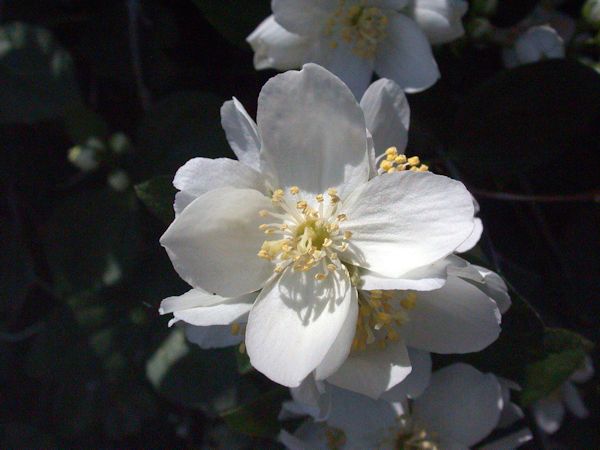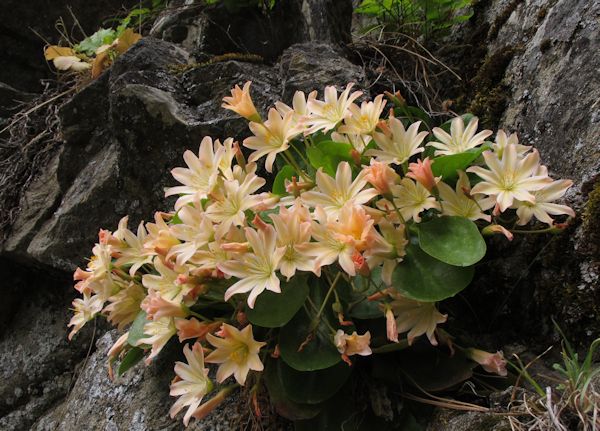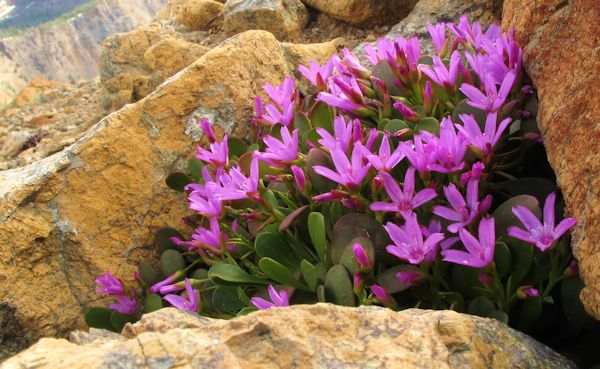What’s in a name? Or, who keeps changing these scientific names?!
The binomial (Genus + species) used for identifying all species, including plants, is very useful and clear. Each species can have only one scientific name, while many common names can be applied to it, often leading to confusion. For example, Philadelphus lewisii refers to Lewis’ mock orange, a lovely and fragrant shrub of the Hydrangea family found across the West. In some areas it is called bridal wreath or syringa; confusingly, Syringa is the genus for the lilac shrub, a non-related member of the Olive family. Where I live, the most abundant grass in orchards is quackgrass, Elymus repens; for that reason, it is commonly referred to as orchardgrass, which is the “accepted” common name for an entirely different species, Dactylis glomerata.
Flower of Lewis’ mock orange, Philadelphus lewisii
However, ever since the old Swede Carl Linnaeus developed this naming system in the mid 1700’s the scientific names have been continually changed and updated/corrected. These changes can lead many people (well, at least some plant nerds) to grumble. “Why did they have to change a perfectly good name”, meaning, “I was rather attached to that old name”, or “Why now, when I finally learned that name?” A particular change that strikes wildflower lovers in Central Washington has been the reclassification of Lewisia tweedyi to Cistanthe tweedyi. Why make this dastardly, nonsensical change, the plant nerd cries? I’ll tell you why!
Cistanthe tweedyi, formerly Lewisia tweedyi
Its cousin, Cistanthe umbellata: in the same genus?! Come on!
Plant classifications have been determined over the centuries by botanists who closely studied all features of the plants in question, including flower form, root structure, hairs on the stems, veins in the leaves, seed coats and much, much more, to determine where they are similar and where they differ. Through painstaking study and often vigorous debate they would group and divide and re-group the plants to best represent their relationship, creating a family tree. A thorough analysis, but one that is still subjective to an extent and prone to reinterpretation.
The advent of DNA analysis in recent decades has brought many changes to the classification system, changes that are objective and quantifiable and less subject to debate. From the Kew (UK) Botanic Gardens site: “Morphological similarities between groups of plants do not always reflect true evolutionary relationships. Information from DNA sequences are now revealing relationships that were previously unknown. In the plant kingdom, for example, peonies once thought to be related to buttercups because of their visual similarities are in fact closer to saxifrages, and papayas have more affinity with cabbages than passion flowers.”
I can thank Dr. Robin O’Quinn, professor at Eastern Washington University, for helping me see the light. Her research on alpine spring beauty (Claytonia megarhiza) populations across the West uses DNA analysis, and she recently spoke to our Native Plant Society chapter on this work and plant taxonomy developments as a whole. For me, quite interesting and clarifying; no more grumbling!
Alpine spring beauty (Claytonia megarhiza)
The correct and accepted scientific names are best found at ITIS, the Integrated Taxonomic Information System (//www.itis.gov/). Most all flora and wildflower books, in particular Flora of the Pacific Northwest by Hitchcock and Cronquist, are not up to date with the correct terminology. So, goodbye, Lewisia tweedyi… and welcome Cistanthe! Same for you Mahonia, it’s been good to know you, Berberis is here to replace you at Derby Canyon Natives.






